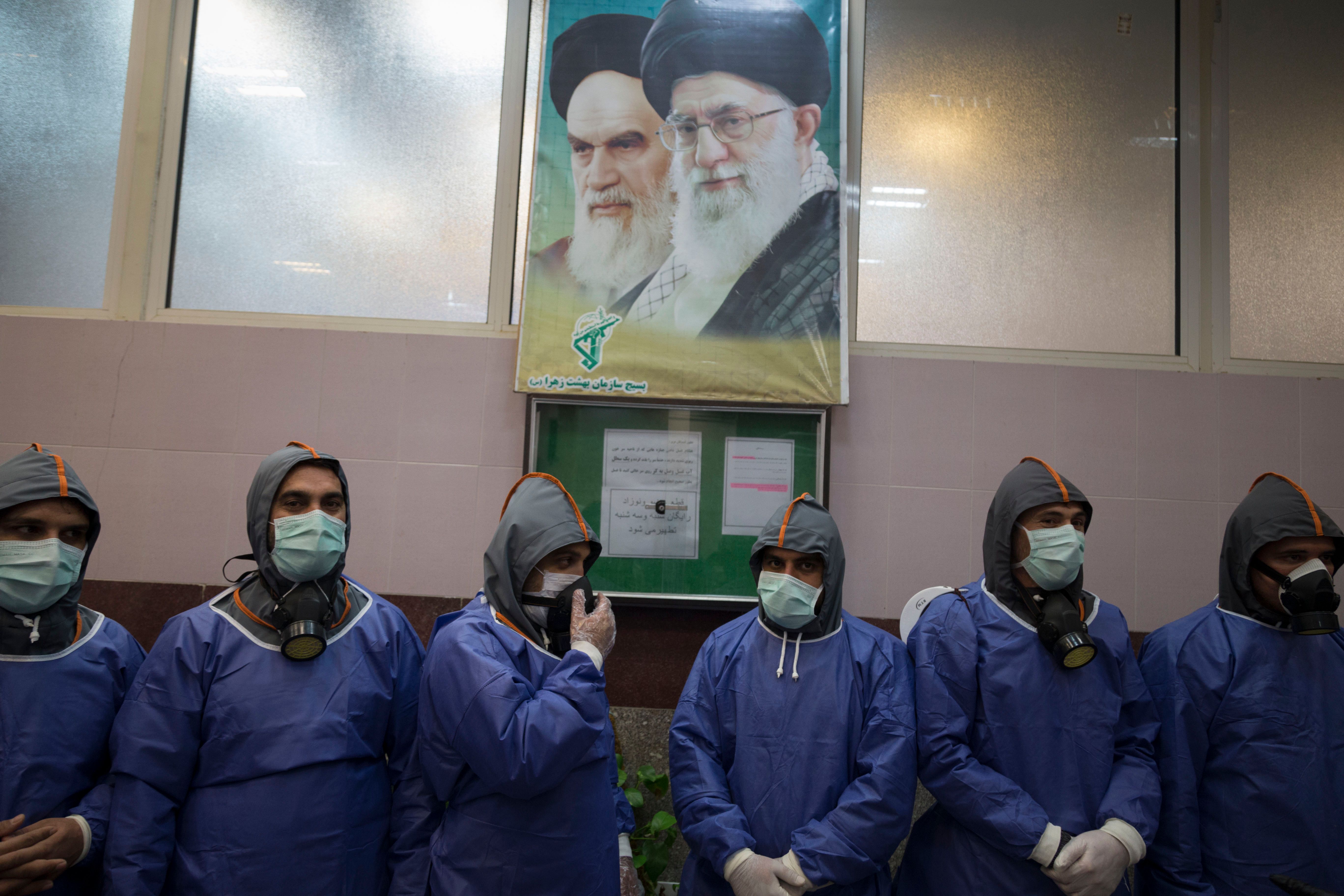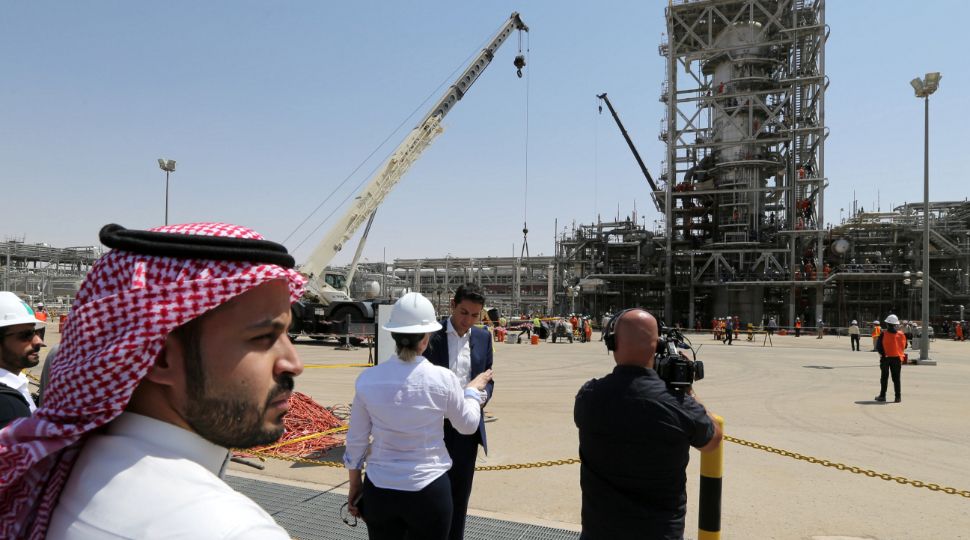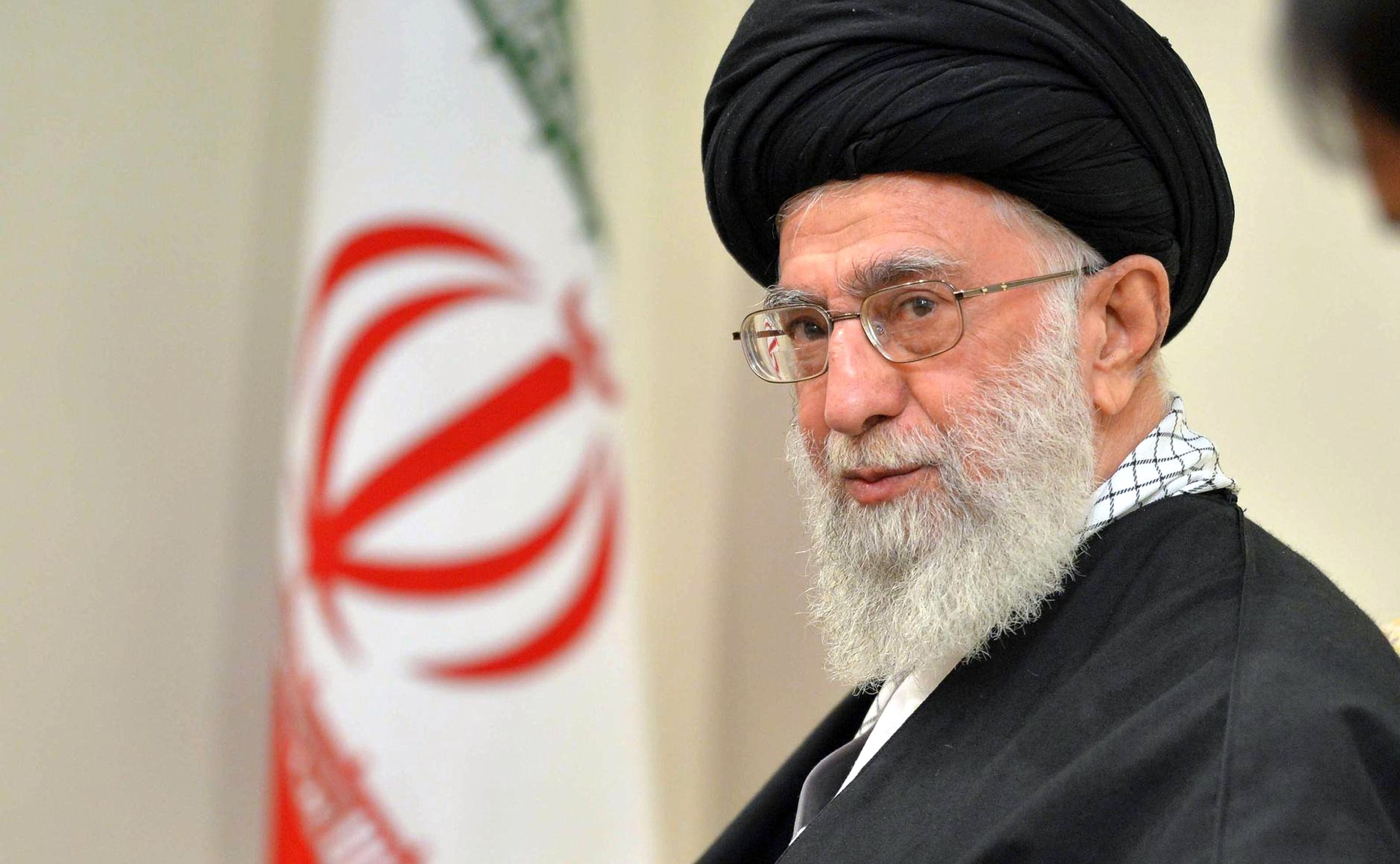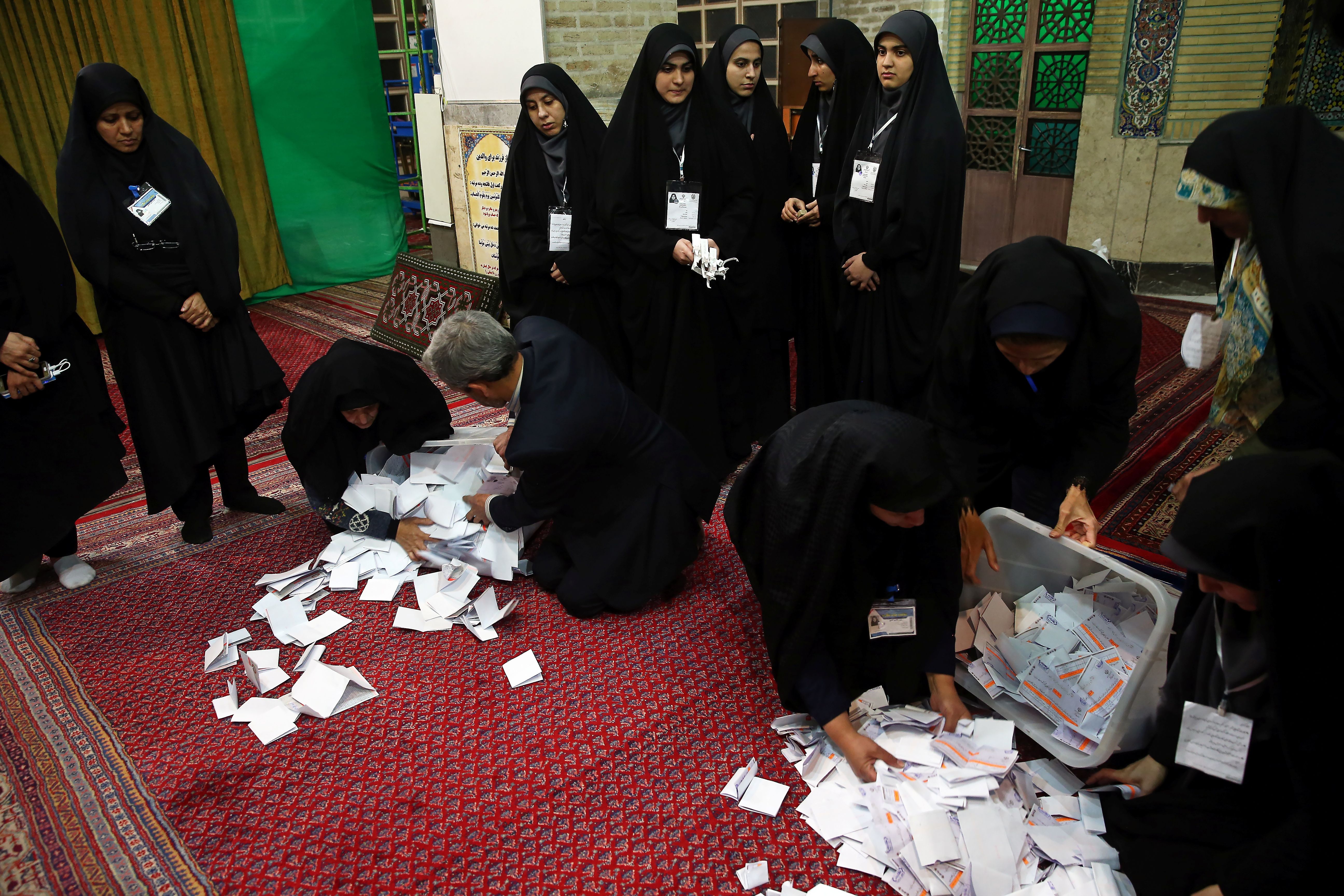
The Development of the Pandemic in Iran
According to official data, by 14 April there were 74,877 cases of COVID-19 in Iran and 4,683 deaths, making the country the eighth most affected by the pandemic. WHO experts estimate that the real rate of sickness could be up to five times higher, which would mean that more than 370,000 people are currently infected. At the end of March, President Hassan Rouhani admitted that up to 80% of Iranians might be “slightly infected” (i.e. asymptomatic) by the coronavirus.
Coronavirus is likely to have been present in Iran since December 2019, although the first cases were diagnosed as local and seasonal flu epidemics. The focus of the outbreak was Qom, one of the most important places of Shia worship and a city in which Chinese companies are present. The subsequent phases of the pandemic were accelerated by the incompetence of the authorities and the limited capabilities of Iran’s health service. Their approach was contrary to WHO’s recommendations, lacking coordination between the Ministry of Health and the Revolutionary Guards and army. The threat was played down when the government attempted to mobilise Iranians during the parliamentary election on 21 February. Despite low turnout (officially 42%), explained by “hostile propaganda”, mobilisation was effective among the older generation of voters, who took part in the election and accelerated virus transmission in the highest-risk group. The pandemic also fits into the context of previous damage to the regime’s image and threats to its legitimacy. These included protests after the rise in petrol prices since November 2019, the killing of General Qassem Soleimani by the U.S. on 3 January, and protests after a passenger plane was shot down over Tehran on 8 January.
The Iranian authorities have been reporting Coronavirus infections since 19 February, presumably when the growing number of COVID-19 cases and deaths could no longer be hidden. There were also cases of infections and deaths among generally older members of the elite, including well-known clergymen, officials of the Ministry of Health, new deputies to the parliament (Majlis), and several people closely associated with Ali Khamenei, the Supreme Leader of Iran. Rouhani’s cabinet initially decided that, for practical and economic reasons, it would not quarantine cities. The delay was also caused by clerical refusal to allow the closure of mosques and upcoming Nowruz (Persian New Year) holidays. In response to the increasing burden on hospitals, the government introduced quarantine, but only after many residents had left cities to go to relatives in rural areas, so further transmission of the virus was not stopped. At the same time, Iranian officials are trying to make the U.S. responsible for the alleged “biological attack” and resumed the campaign to have U.S. sanctions lifted. High-ranking UN officials also raised the issue of sanctions as an obstacle to controlling and suppressing the pandemic.
The Pandemic and the Stability of Iran
The net result of the pandemic in Iran will be the collapse of the healthcare system built over many years. The crisis of the system is aggravated by, among many factors, the fact that hospitals are available only in major and overcrowded cities, the high mortality from COVID-19 among older people (although Iranians over 60 years old are only 5% of the population, while in Poland this group is 25% of the total), and more than 50,000 veterans of the 1980 to 1988 war with Iraq, who are still being treated for complications arising from the use of chemical weapons during that conflict. Projections by the Sharif Technical University assume that the first wave of the pandemic will last in Iran until May, and suggest three scenarios (12,000, 110,000, or 3.5 million deaths among 80 million Iranians). The second and third of these scenarios would mean a sharp change in the age structure of the population. Combined with structural economic problems and corruption in Iran, a historical decline in oil prices, the slowdown of China’s economy (Iran’s main partner) and a decline in export profits, the stability of the regime may face further deterioration, with the greater undermining of its legitimacy. The expected impact of the pandemic on Russia and China will also limit the form and scope of their aid to Iran, particularly in terms of loans and investments. With the intensification of the United States’ “maximum pressure” policy, it is equally unlikely that Iran will receive an expected $5 billion IMF loan. All of these factors call into question the effectiveness of the “shielding package” announced by Iran’s government for the protection of businesses and the poorest Iranians.
However, stabilisation factors also persist in Iran. The ruling clergy and elite are relying on family ties. Generational change within the elite could ensure continuity of the system. Although the resumption of protests in Iran is inevitable, this will be delayed until the end of the pandemic. Organised revolt is hampered by barriers between the middle class and workers, and since arrests in 2009 of “green” and “reformist” faction members, there is no opposition within the elite (they were not included in the recent amnesty for 75,000 prisoners). If the protests are violently pacified, Khamenei will retain the loyal support of the security apparatus. Also, there is an expectation of controlled political change in Iran, with the 2021 presidential election likely to be won by a conservative candidate, meaning defeat for the candidate supported by Rouhani. Next year will be the end of the “technocratic” administration, which has already lost in elections to the Majlis. A much more serious test of the stability of the regime in Tehran might be the successor to Khamenei. His age makes this imminent and two scenarios are possible. The first would see a smooth, behind the scenes transition, as happened in 1989 after the death of Ruhollah Khomeini. In the second scenario, there would be a struggle for power, which may cause divisions within the elite and accelerate the rise of grass-roots opposition with the wider support of Iranians.
Iran’s Impact on the Region
Iran became the epicentre of SARS-CoV-2 in the Middle East. Transmission of the virus was caused by Shia pilgrimages to Iran from Lebanon, Iraq and the Arab states of Gulf and South Asia, as well as through regular contacts between clergy from Iran and Arab countries. The continuous movement of Iranian Revolutionary Guards and volunteers organised by them in Syria, Iraq and Yemen also contributed to the regional outbreak. For Afghanistan, already war-torn and unprepared to contain the pandemic’s effects, the return of two million Afghans from Iran (where they were refugees and a cheap workforce) might be a further destabilising factor (the first wave of returns was estimated at 115,000). Cases of coronavirus in Iran were also been reported among the Iranian diaspora in Canada, the U.S. and Europe after returns from visits to the country. In the coming months, there is little chance that Iran’s relations with its neighbours will be normalised, particularly in respect of Saudi Arabia and Bahrain (officials of the latter were describing recently Iran as representing a “biological aggressor” in the region). A different approach was adopted by the UAE, which sent 30 tons of humanitarian aid to Iranians. Nevertheless, the expected worsening of the state of Iran’s economy will not translate into weaker actions against Saudi Arabia and Israel. This is due to the low cost of Revolutionary Guards operations and huge stocks of weapons for pro-Iranian forces in region. A reduction of Iranian financial aid to these forces may also be expected, what might result in more intense rivalry among Iraqi Shia militias and a weakening of the Syrian regime (which receives military assistance and between $2 billion and $3 billion annually from Iran).
Conclusions and Prospects
The delayed actions by the Iranian authorities have deepened the crisis caused by the COVID-19 pandemic. This will exacerbate internal problems and accelerate demographic and social changes in Iran. Despite the collapse of the healthcare system, the regime will likely remain stable until the moment when divisions other than personal ones occur in the elite and an anti-system opposition arises. The destabilisation of the regime is, therefore, more likely only in the event of Khamenei’s sudden death and some disruption in the succession.
The main challenge for Europe is the potential escalation of tensions between Iran and the United States. Such escalation may result from attempts by the regime to consolidate Iranian political sentiment based on a U.S. threat. It cannot be excluded that the U.S. might attempt to exploit problems of the Iranian regime. There is little chance for nuclear compromise between the U.S. and Iran without recalculation of the interests of both states. Increased EU aid to Iran should be implemented in material form (medicine and medical equipment) to ensure that this will reach victims of the pandemic. Aid launched by the EU through its special mechanism (INSTEX) should be conditional on previous European positions regarding Iran’s respect for human rights obligations, restrictions on its nuclear programme, and a less aggressive regional policy.







